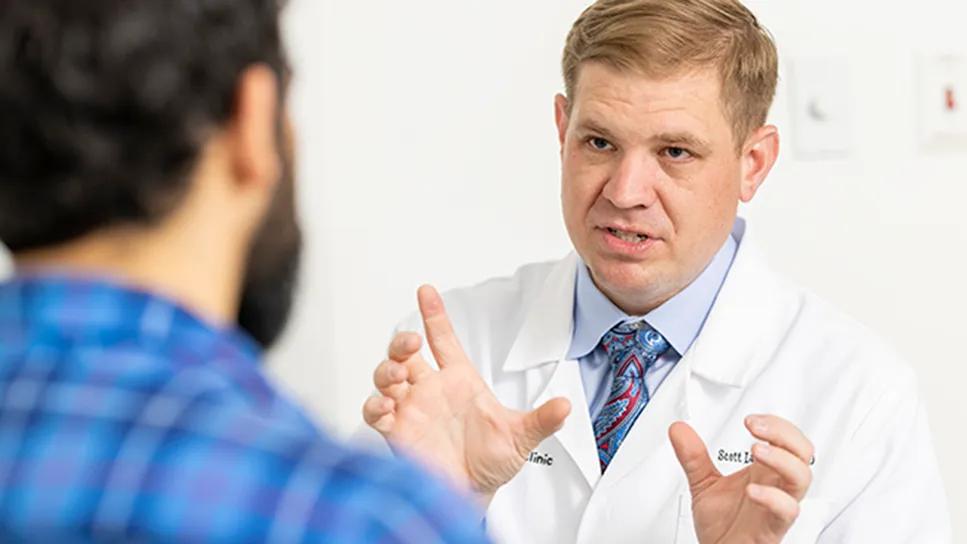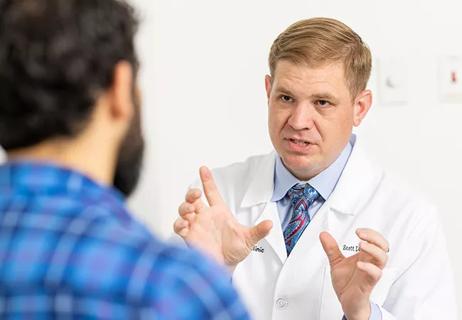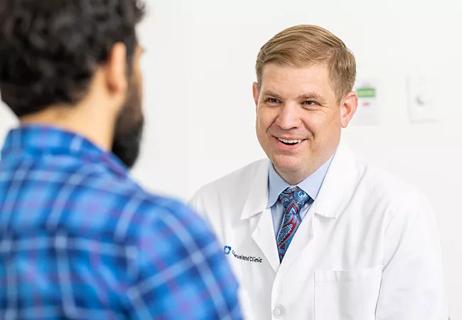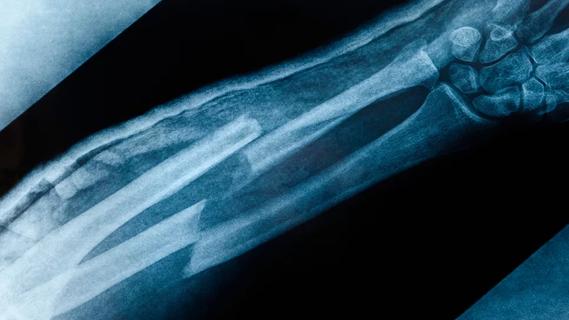Reproductive urologists publish a contemporary review to guide practice

Some estimates suggest that in the U.S., upward of 40% of men age 45 and older have testosterone deficiency. The clinical diagnosis, known as hypogonadism, has increased in recent years, owing to growing awareness about the condition and increased prevalence of its comorbidities, which include obesity and age. Alongside this, testosterone replacement therapy (TRT) has become more accessible through direct-to-consumer entities and men’s health clinics.
Advertisement
Cleveland Clinic is a non-profit academic medical center. Advertising on our site helps support our mission. We do not endorse non-Cleveland Clinic products or services. Policy
A significant drawback of TRT, however, is its impact on spermatogenesis, especially in reproductive-age men, many of whom are not adequately informed when they begin the treatment. Cleveland Clinic reproductive urologist Scott Lundy, MD, PhD, frequently observes this in his practice.
"When patients who are taking hormones come to us with issues conceiving, in most cases, they've never been told that this therapy can render most men infertile and azoospermic," says Scott Lundy, MD, PhD.
Dr. Lundy and colleagues authored a report published in Nature Reviews Urology that advocates for a modern understanding of managing testosterone deficiency in men with reproductive desire. The article provides a comprehensive review, including the epidemiology of hypogonadism, the effects of TRT on spermatogenesis, a full therapeutic landscape, and other clinical considerations. Below, Dr. Lundy offers four important takeaways for providers.
Any man who is coming to clinic with an interest in testosterone therapy must be queried about their desire for children now or in the future. He calls this the first and most fundamental screening question. It also requires clinicians to reconsider assumptions around reproductive age.
"You might think, well, an 18-year-old probably doesn't want children right away; you might be wrong. You might also think a 60-year-old doesn't want children, and you could also very well be incorrect in that assumption," says Dr. Lundy.
Understanding patients' reproductive goals matters and could substantially change the treatment a provider should offer for hypogonadism.
Advertisement
"After ruling out other concerning causes, when patients with infertility or subfertility and low testosterone present, we can treat them with several medications that we collectively call empiric medical therapy," he explains. Medications such as clomiphene or anastrozole activate a testicular overdrive to create more testosterone and sperm. The most potent option is human chorionic gonadotropin (HCG), administered by injection three times a week. "It can offer a great deal of benefit for those patients," he says.
When they come in already on TRT and a workup reveals poor or zero sperm counts, he says a candid discussion about whether they are willing to stop the therapy may be at hand.
Withdrawal symptoms include fatigue, low libido and mood changes as the body remembers how to produce its own testosterone again, but medications, including those previously mentioned, can be a useful adjunct.
"We do think most men will recover, but it might take three to six months hormonally, and then another six months to recover the sperm production side. Sperm production may never be as robust as it was before, but we do think most men will recover some degree of spermatogenesis,” Dr. Lundy says. While some men remain azoospermic, newer data suggest that this may be a condition that predated the use of TRT.
Cost is another consideration for clinical decision-making with the patient. These medications are not often covered by insurance, and the cost can be as much as $250 a month.
A thorough workup by a reproductive urologist is the gold standard for helping these men to the greatest degree. But, realistically, infertility and hypogonadism are common concerns in men and may be encountered in a variety of practice settings.
Advertisement
Assessing fertility at the time a patient is considering testosterone therapy should be the primary goal for every provider, as there are safe, reliable and inexpensive oral treatment regimens available to men who desire to maintain their fertility and also treat their hypogonadism.
However, like all medications that affect the hypothalamic pituitary gonadal axis, Dr. Lundy says patients on these medications require some degree of surveillance with blood work and monitoring and should not be left to continue these medications in perpetuity.
Primary care physicians and endocrinologists can help aggressively manage patients' comorbidities, like diabetes and obesity, which can contribute to infertility, and help promote endogenous testosterone production. The goal, he says, is to eventually stop this therapy in the future once patients have achieved a healthy living status.
"Our goal is to equip all providers of all backgrounds with the fundamentals to at least understand the options and then, perhaps, understand when to refer to an expert when it's outside of the scope of their practice. I think this has exceedingly far-reaching implications for many specialties and the treatment of millions of patients," concludes Dr. Lundy.
Advertisement
Advertisement

How a multicenter consortium aims to change the research landscape

Sperm counts haven’t declined among American men in recent years, new research from Cleveland Clinic finds.

Male factors play a role in about half of all infertility cases, yet men often are not evaluated

Findings expand upon earlier data, providing new noninvasive options

Meta-analysis assesses outcomes in adolescent age vs. mid-adulthood

Early, individualized diagnosis and comprehensive management key to preserving fertility

Testosterone deficiency can prove challenging to diagnose and treat

Surprise findings argue for caution about testosterone use in men at risk for fracture